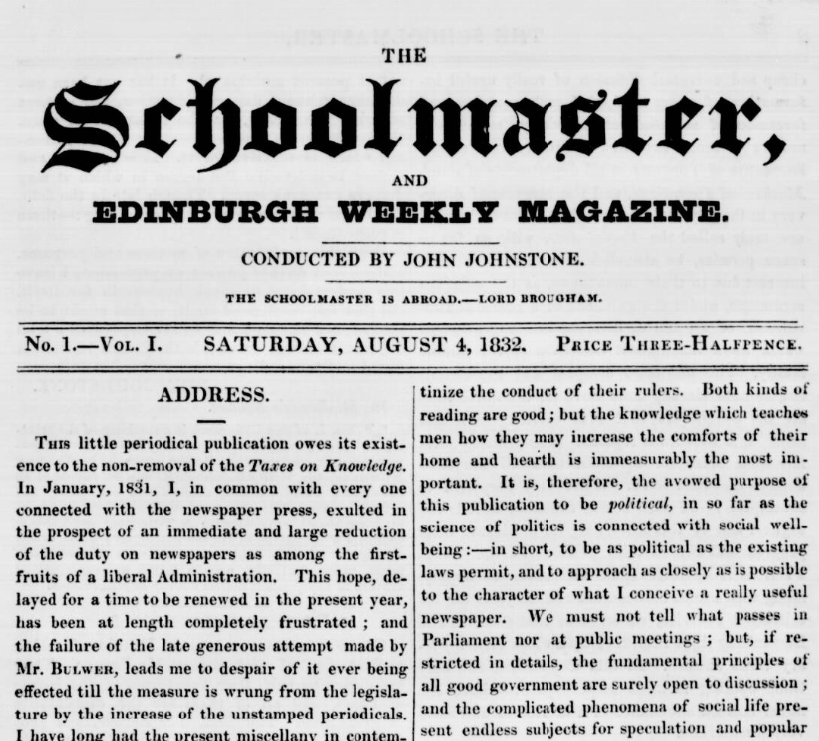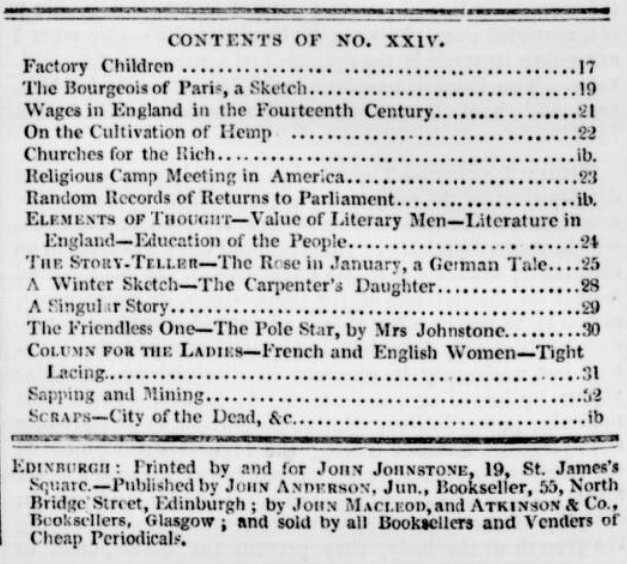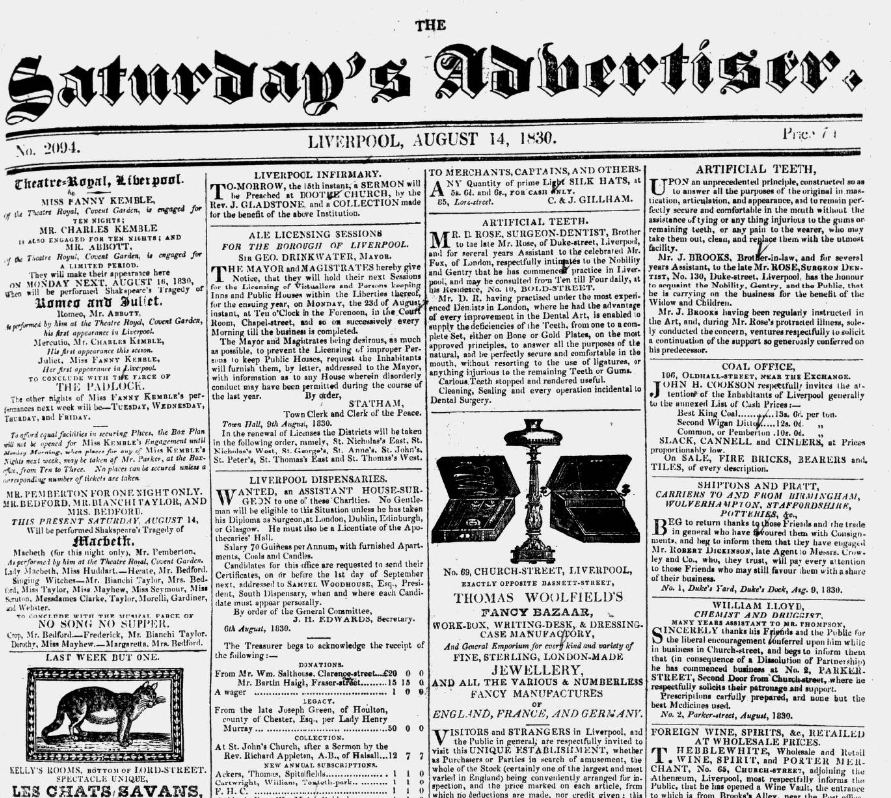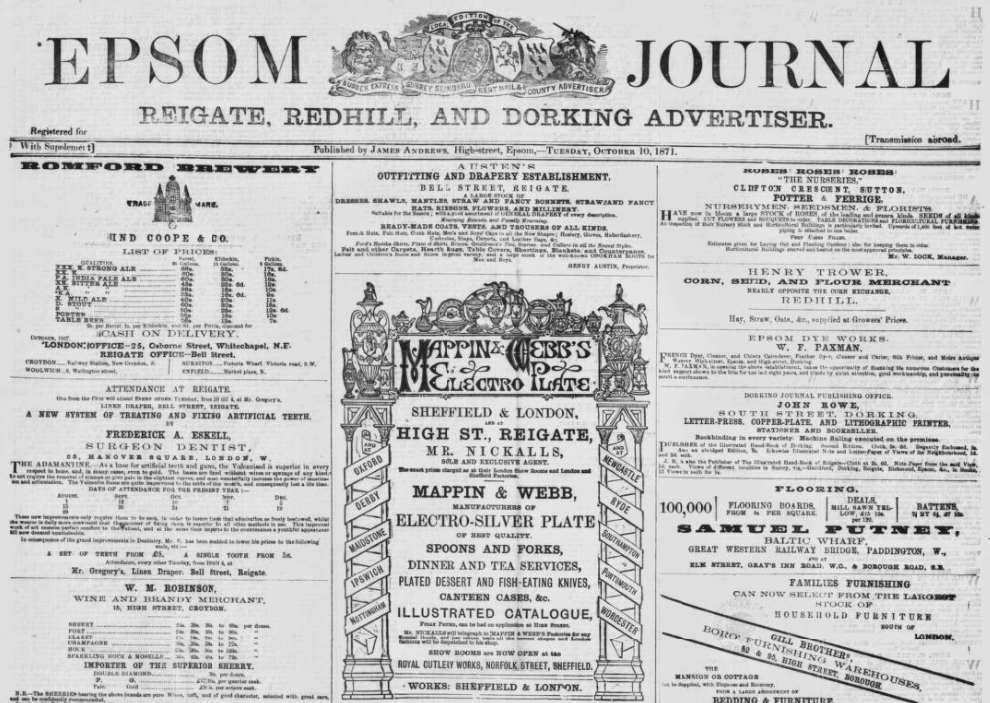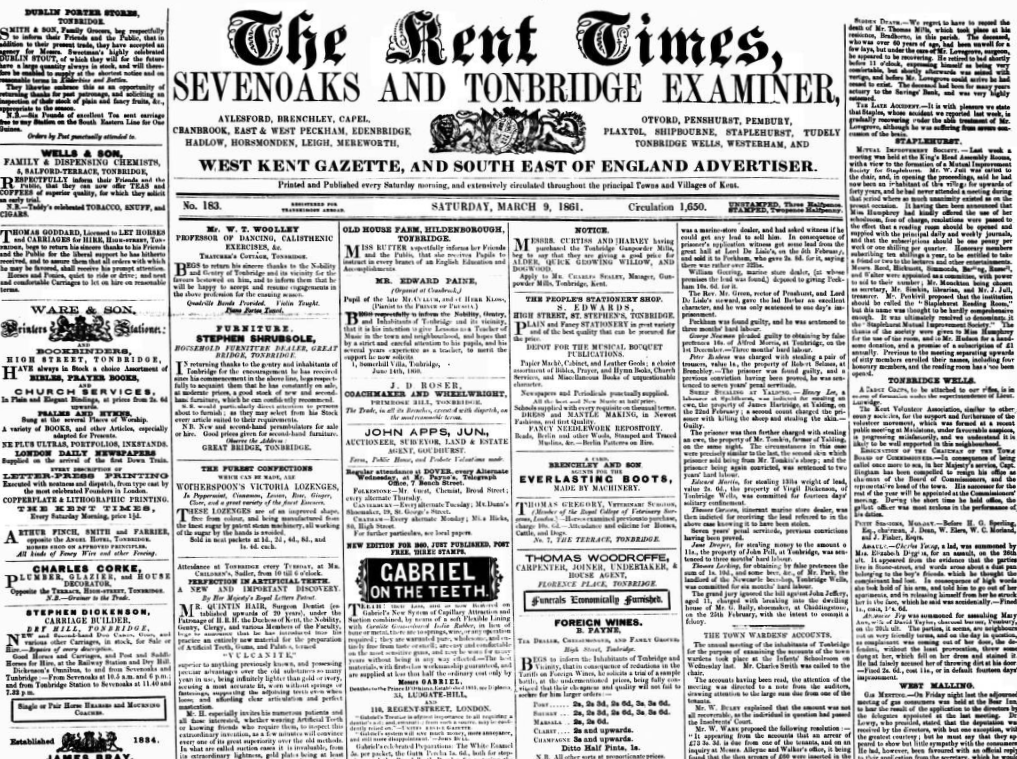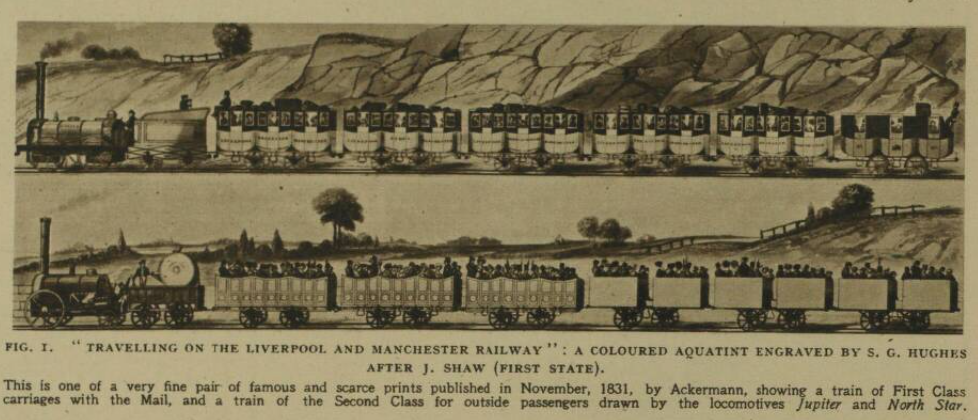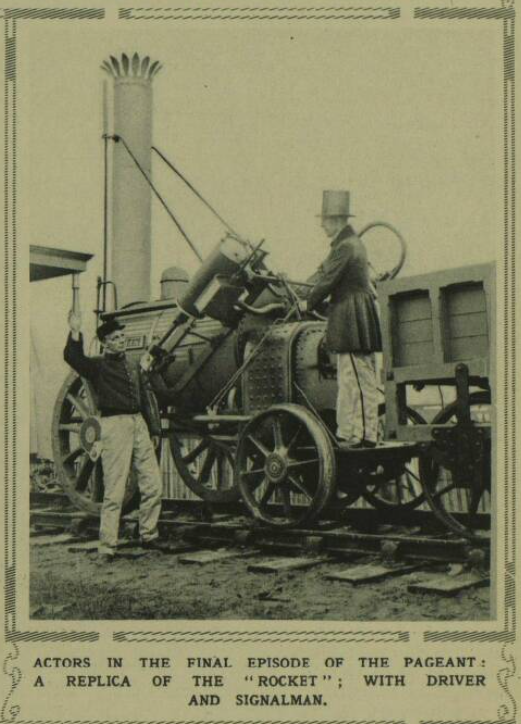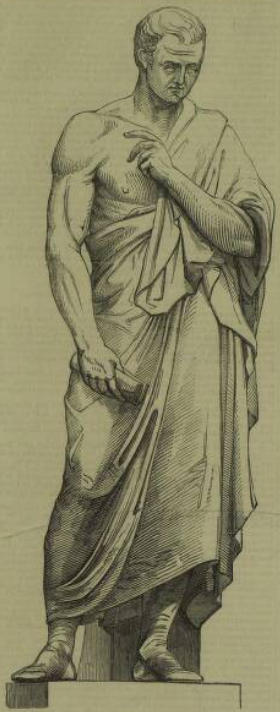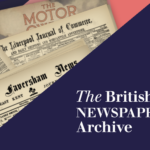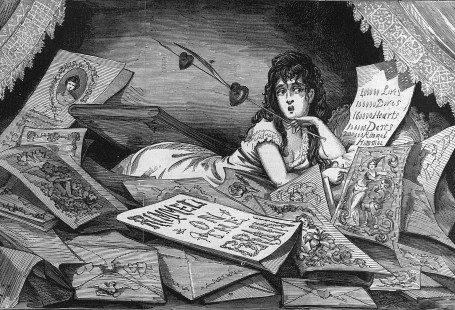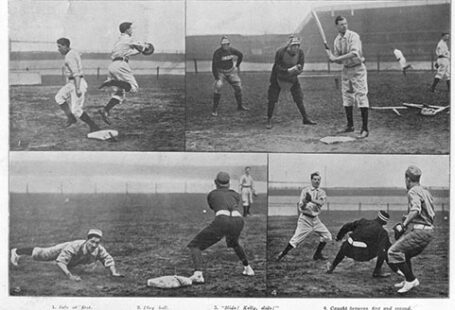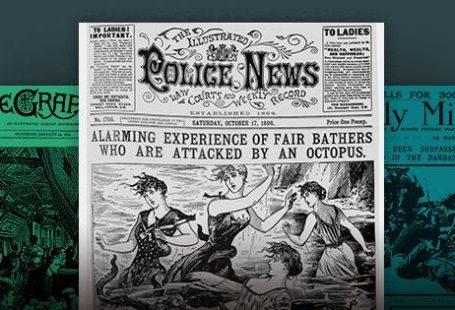This September at The Archive we are going back to school with the addition of brand new title the Schoolmaster and Edinburgh Weekly Magazine, alongside three other brand new titles from London, Liverpool, and Kent. Meanwhile, we’ve added 302,872 brand new pages so far this month, with 26 of our existing titles updated too, from England, Wales, Scotland and Ireland.
So from Bayswater to Bury, from Carmarthen to Croydon, from Donegal to Dumfries, read on to discover more about our new and updated titles of the week. And whilst we’re going back to school with the edition of Scottish title the Schoolmaster, we’re also delving into the history of transport, as we take a look at the opening of the world’s first steam intercity railway line, between Liverpool and Manchester, which was opened on 15 September 1830. Sadly, this historic occasion was marred by tragedy, as Liverpool M.P. William Huskisson became one of the world’s first railway passenger fatalities.
Register now and explore the Archive
And to start off our journey through our new titles of the week we go back to school with the Schoolmaster and Edinburgh Weekly Magazine, which was first published in Edinburgh on 4 August 1832. This weekly publication, which appeared on a Saturday, was founded by husband and wife duo John and Christian Isobel Johnstone. John was a printer, whilst Christian was a novelist, journalist and editor. The pair had founded the Inverness Courier in 1817, which they had conducted until 1824, when they moved on to edit the Edinburgh Chronicle.
The Johnstones founded the Schoolmaster after being disappointed by the limitations of the 1832 Reform Act, which changed the electoral system in the United Kingdom. The purpose of the Schoolmaster was, therefore, to take its readers back to school, to educate its audience, who consisted of those to whom the vote had not yet been extended, and to prepare them for future voting responsibilities.
Indeed, the inaugural editorial of the Schoolmaster and Edinburgh Weekly Magazine declared how its ‘main object’ was to be:
…the cheap and universal diffusion of really useful information of every kind, – of such snatches and foretastes of all kinds of knowledge, as may stimulate to more extended inquiries, and supply ELEMENTS OF THOUGHT in all departments of mind.
Adding how:
To the young, THE SCHOOLMASTER will study to supply, along with useful information and subjects for intellectual exercise, snatches of that graceful and humanizing light literature with which contemporary times abound.
Indeed, the Johnstones offered the Schoolmaster at the relatively low price of three halfpence, for which readers could enjoy sixteen pages of content, laid out across two columns. In its pages, which were mostly penned by the couple themselves, you could find a variety of different articles, from a look at the ‘Life of Andrew Marvell’ to the ‘Progress of Scotch Agriculture.’
The Schoolmaster and Edinburgh Weekly Magazine was a trailblazing publication, being an early example of a newspaper with a special section devoted to children. Its ‘Column For Youth’ contained such instruction as ‘Duties of Children to Their Parents,’ whilst its educational features took a look at the natural world, with one article being entitled ‘Rational of the Colouring of the Wood in October.’ The Schoolmaster also included a ‘Column for the Ladies,’ as well as serialised fiction, some of which was penned by Christian Johnstone.
This Liberal and advanced journal, meanwhile, examined more radical subjects, addressing ‘Flogging in the Army,’ and also examining the daily life of workers. However, the toll of running and writing the Magazine was too much on the Johnstones, and it soon became a monthly publication, the title changed to Johnstone’s Edinburgh Magazine. Despite having a healthy circulation of 5,000 copies, this was not enough for the endeavour to be a profitable one, and the price was raised to eight pence per copy.
In 1834 the Johnstones joined forces with fellow publisher William Tait, and the Schoolmaster was absorbed into Tait’s Edinburgh Magazine. However, the Johnstones retained strong ties to the new publication, with Christian Johnstone acting as its editor until 1846.
Our next new title of the week was a contemporary of the Schoolmaster, and it is Liverpool Saturday’s Advertiser, which was first published early in the nineteenth century. Occupying ‘a rank of merit not below that of any of its competitors for public favour,’ Liverpool Saturday’s Advertiser appeared weekly on a Saturday at the cost of seven pence.
Its four pages were mainly filled with news of arrivals and departures at the Liverpool docks, with details of the ships that had sailed during the week, as well as information around the arrivals and imports from the likes of South America, the United States, the West Indies, Russia, Prussia, Sweden, Norway and the Netherlands. Alongside such ‘shipping intelligence,’ the newspaper also featured advertisements for ships that were due to sail to destinations across the world.
Beyond such shipping news, Liverpool Saturday’s Night also printed ‘Foreign Intelligence’ and ‘Domestic News,’ and the latest marriages from the area. It also published the latest society events, listing the names of those who had attended a ‘Fancy Ball.’ The publication was also known for its ‘accurate reporting’ of the Peterloo massacre, which was penned by a ‘Special Constable.’
We travel to Surrey for our penultimate new title of the week, which is the Epsom Journal. Established in 1862 as the Epsom Journal and Reigate, Redhill and Dorking Advertiser, this publication was a localised edition of the Lewes-based Sussex Agricultural Express. Appearing every Tuesday at the cost of one pence, the Epsom Journal was Conservative in its politics and circulated in the Surrey town of Epsom and ‘the neighbourhood.’
The six pages of the Epsom Journal were filled with predominately local news, with reports from the likes of Dorking, Ewell, Epsom, Croydon, Sutton, Reigate, Redhill and Crawley. The title featured notices of births, marriages, and deaths, a look at local organisations like the Board of Highways, and reports on sport in the area, such as cricket matches between Surrey and Sussex. Alongside more local news, the Epsom Journal did feature national news, as well as a more general ‘Summary of News’ section.
Our final new title of the week is the Kent Times, Tonbridge and Sevenoaks Examiner, which was first published in the market town of Tonbridge in 1857. Indeed, at this time the town was known as Tunbridge, but its name was actually changed in 1870 to Tonbridge to avoid confusion with the town of Tunbridge Wells.
Appearing every Saturday at the cost of one and a half pence, the Kent Times, Tonbridge and Sevenoaks Examiner was ‘extensively circulated throughout the principal towns and villages of Kent.’ An ultimately short-lived newspaper, it featured local news from the likes of Ashford, Tunbridge Wells, Sevenoaks and Goudhurst, with a look at the latest from the Tunbridge Petty Sessions and news on the hop harvest. Meanwhile, the publication published news from further afield, from India, America, Persia, China and Prussia, alongside a ‘London Letter.’
That may be it from our fantastic four new newspapers of the week, but there’s still a lot to be excited about, with the updates we have made to our existing titles. Highlights include the over 44,000 brand new pages that we have added to the Liverpool Daily Post, whilst we have also added over 25,000 brand new pages to the Gloucester Citizen, over 19,000 brand new pages to the Rochdale Observer and over 13,000 brand new pages to the Croydon Advertiser and East Surrey Reporter.
Meanwhile, we’ve updated two of our Scottish newspapers, namely the Dumfries and Galloway Standard and the North British Advertiser & Ladies Journal. This week also sees updates to Carmarthen’s Welshman, and to Ireland’s Donegal Vindicator.
The Opening of the Liverpool and Manchester Railway – September 1830
The opening of the Liverpool and Manchester Railway on 15 September 1830 was a momentous event in transport history. It was the world’s first intercity passenger railway that was solely operated by steam locomotives, and its opening was attended by large crowds and dignitaries like the then Prime Minister the Duke of Wellington. However, the joyous and historic day was marred by tragedy when Liverpool M.P. William Huskisson was accidentally killed by Robert Stephenson’s pioneering Rocket locomotive.
Our new title Liverpool Saturday’s Advertiser was on hand to describe the tragic event, in its description of the day’s happenings, which was published on 18 September 1830.
The first hand account, which describes the journey of the Duke of Wellington and other dignitaries along the line, describes how:
We had most of us alighted, and were walking about, congratulating ourselves generally, and the ladies particularly, on the truly delightful treat we were enjoying, all hearts bounding with joyous excitement, and every tongue eloquent in praise of the gigantic work now completed, and the advantages and pleasures it afforded.
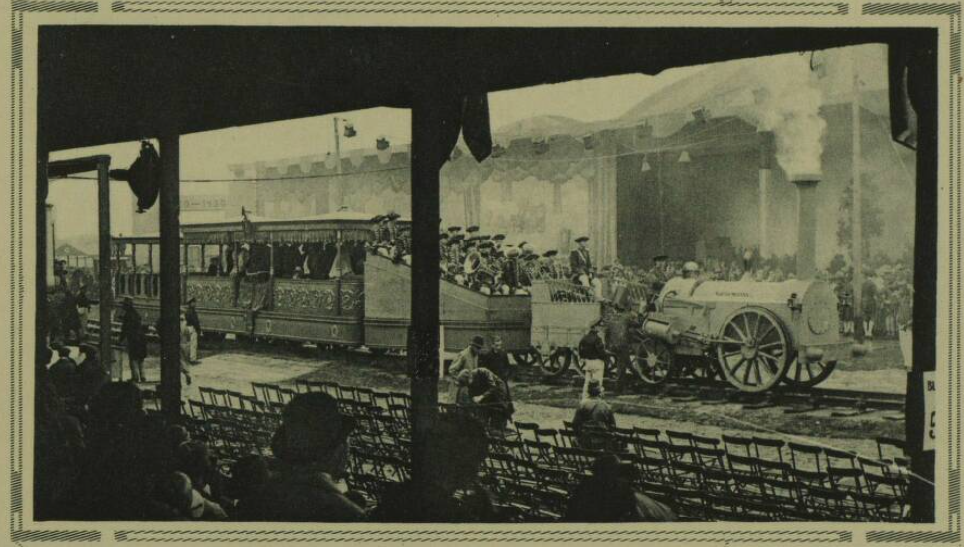
Soon, ‘a murmur and an agitation at a little distance betokened something alarming,’ as the tragedy of the day began to unfold. Liverpool Saturday’s Advertiser outlines what had taken place:
After three of the engines with their trains had passed the Duke’s carriage, although the others had to follow, the company began to alight from all the carriages which had just arrived. The Duke of Wellington and Mr. Huskisson had just shaken hands, and Mr. Huskisson, Prince Esterhazy, Mr. Birch, Mr. H. Earle, Mr. William Holmes, M.P. and others, were standing in the road when the other carriages were approaching.
The account continues:
An alarm being given, most of the gentlemen sprang the carriage; but Mr. Huskisson seemed flurried, and from some cause, not clearly ascertained, he fell under the engine of the approaching carriages, the wheel of which shattered his leg in the most dreadful manner.
On being raised from the ground by the Earl of Wilton, Mr. Holmes, and other gentlemen, his only exclamations were- ‘Where Mrs Huskisson ? I have met my death. God forgive me.’ Immediately afterwards he swooned.
The unfortunate William Huskisson, who was in bad health and known to be clumsy, passed away from his injuries that evening. And now, whilst an effective, affordable and quick method of transportation existed, this accident underlined how it was not without its dangers.
Find out more about the early history of railways, other unfortunate accidents, and much more besides, in the pages of our newspaper Archive today.
New Titles
| Title | Years Added |
| Epsom Journal | 1871-1896, 1898-1899, 1901-1902 |
| Kent Times, Tonbridge and Sevenoaks Examiner | 1858-1859, 1861-1862 |
| Liverpool Saturday’s Advertiser | 1823, 1826-1828, 1830-1832 |
| Schoolmaster and Edinburgh Weekly Magazine | 1832-1833 |
Updated Titles
This week we have updated 26 of our existing titles.
You can learn more about each of the titles we add to every week by clicking on their names. On each paper’s title page, you can read a FREE sample issue, learn more about our current holdings, and our plans for digitisation.
You can keep up to date with all the latest additions by visiting the recently added page. You can even look ahead to see what we’re going to add tomorrow.


